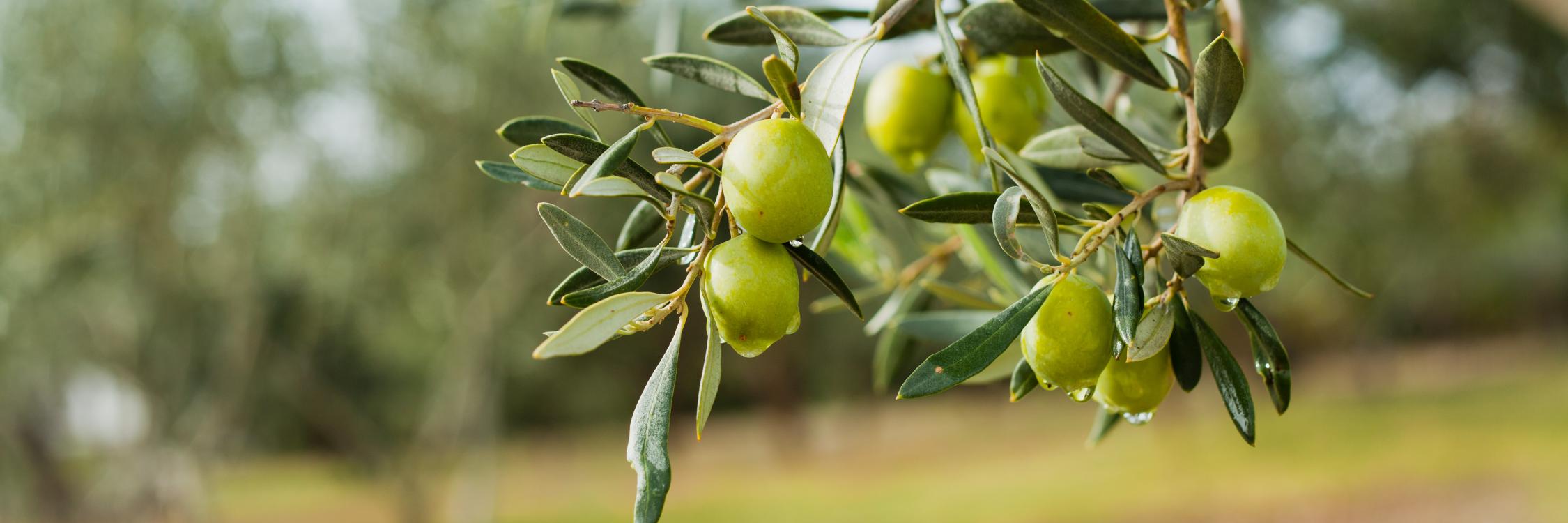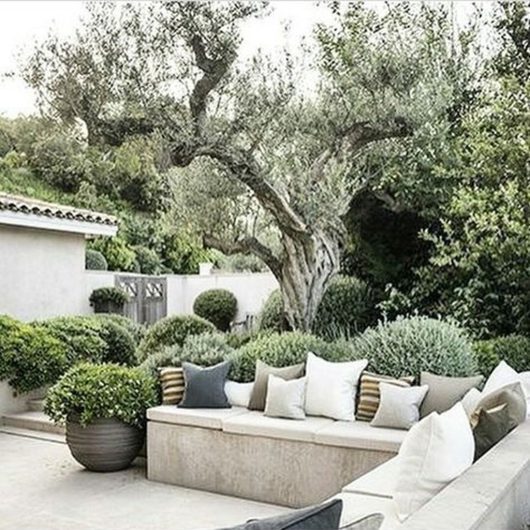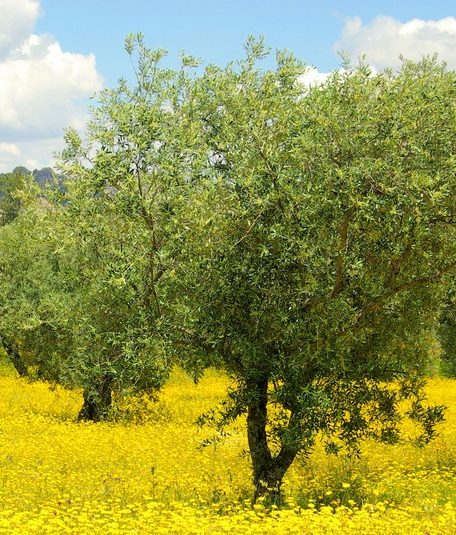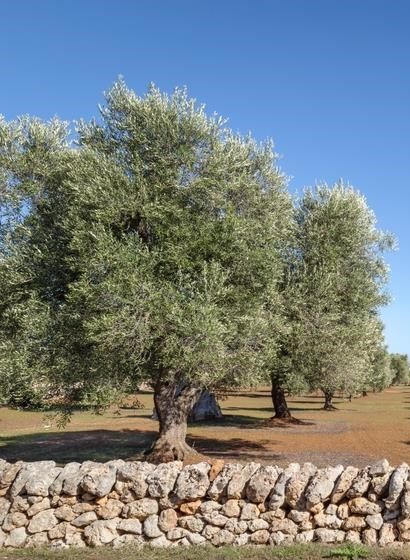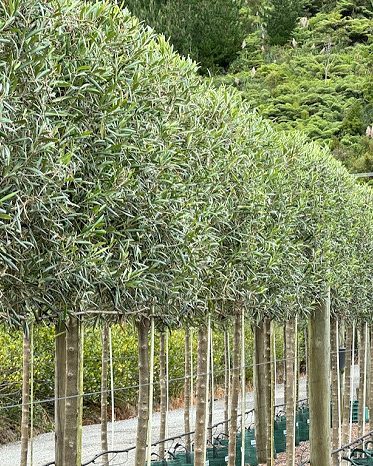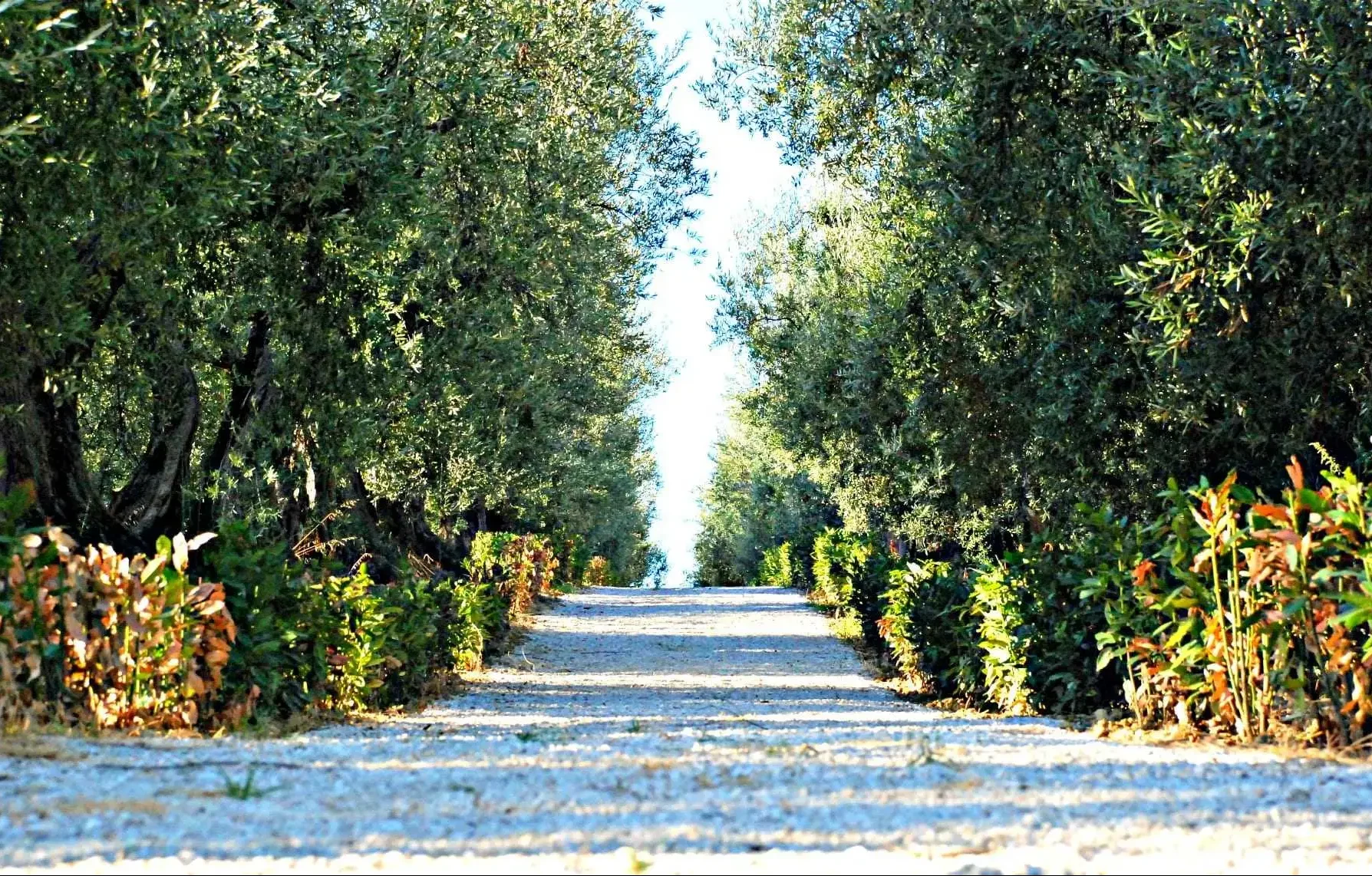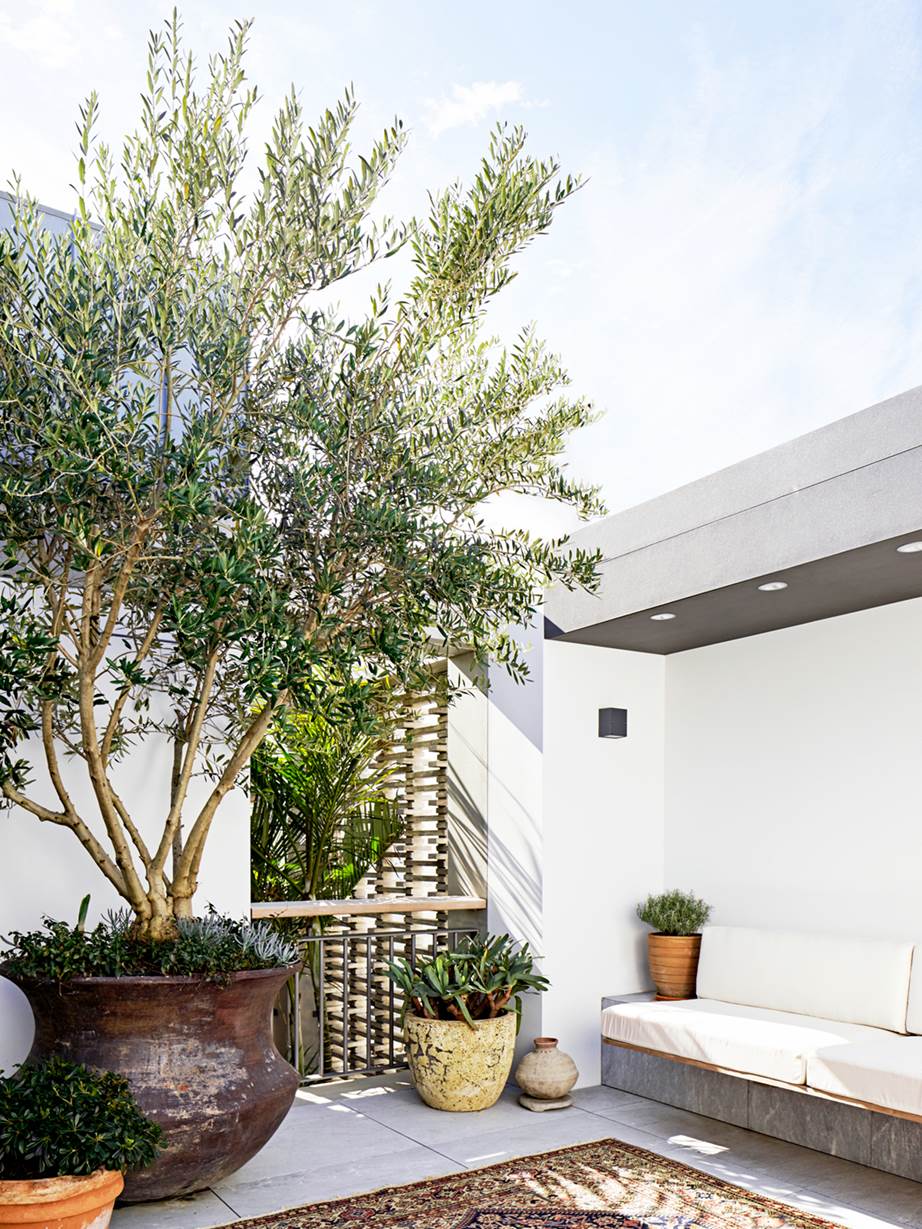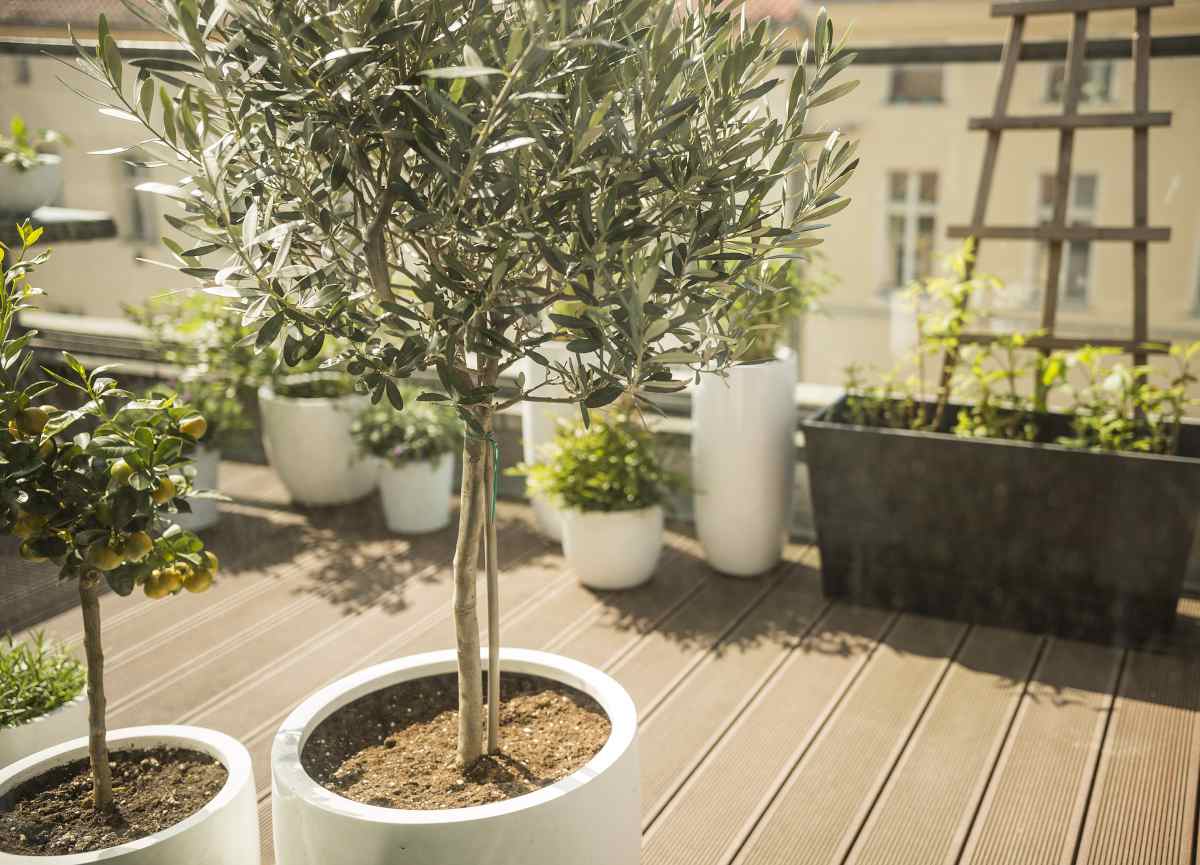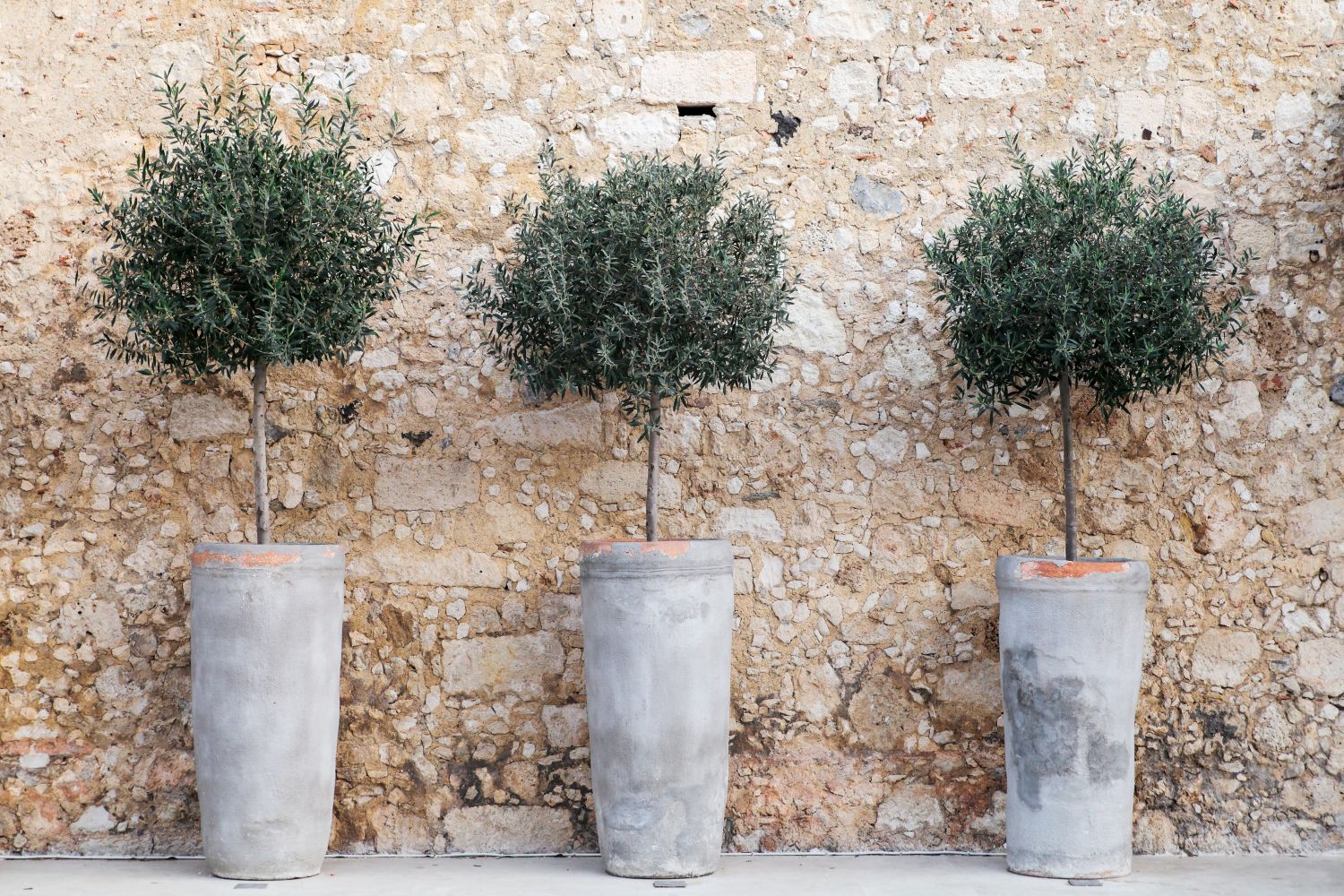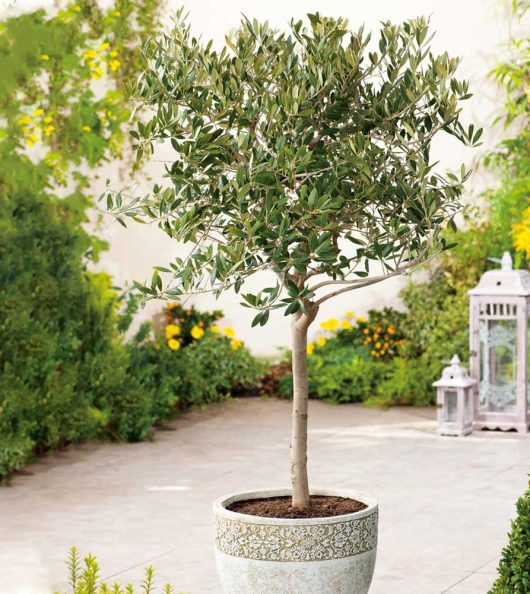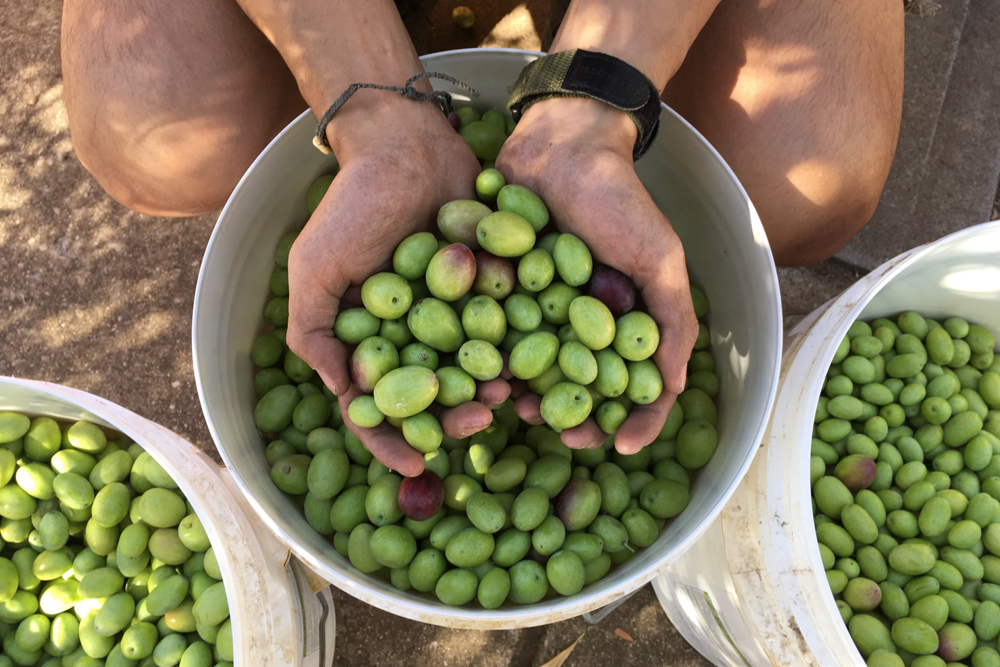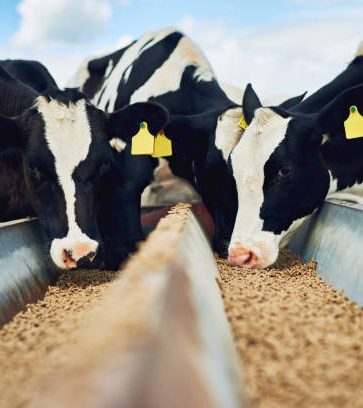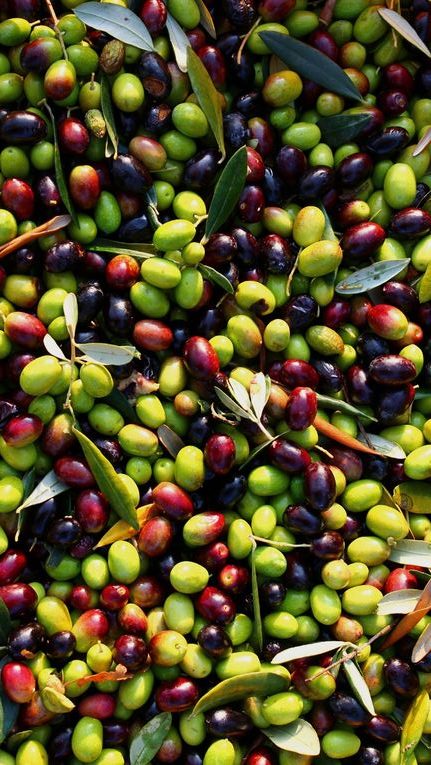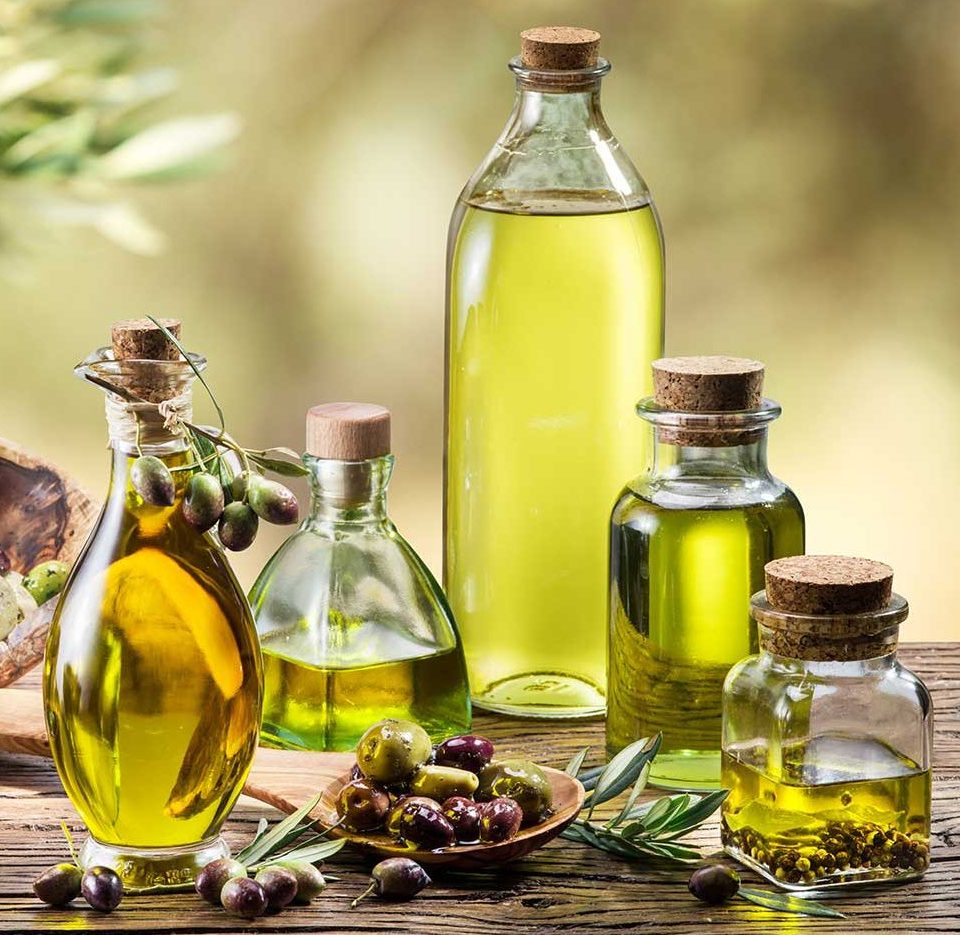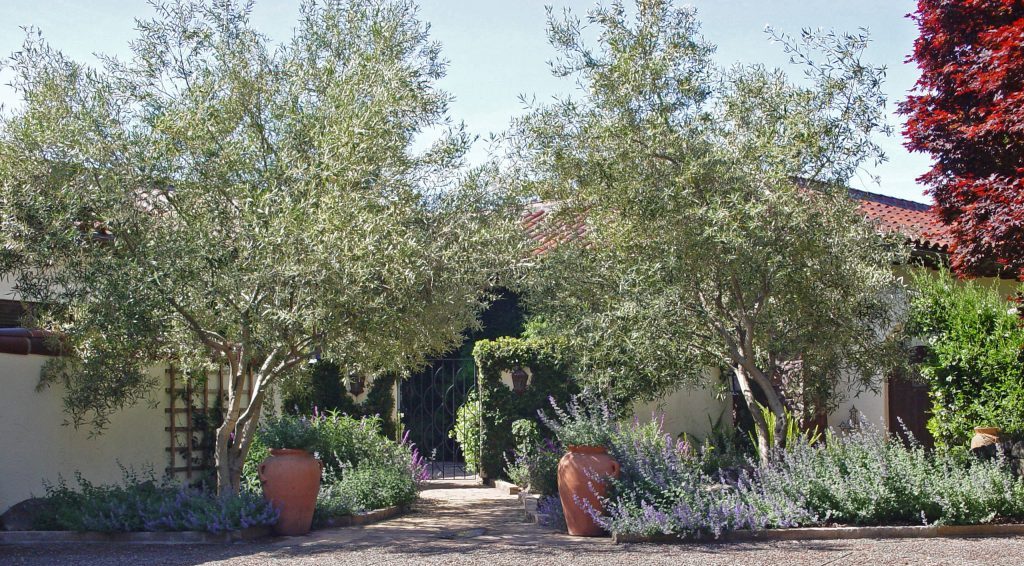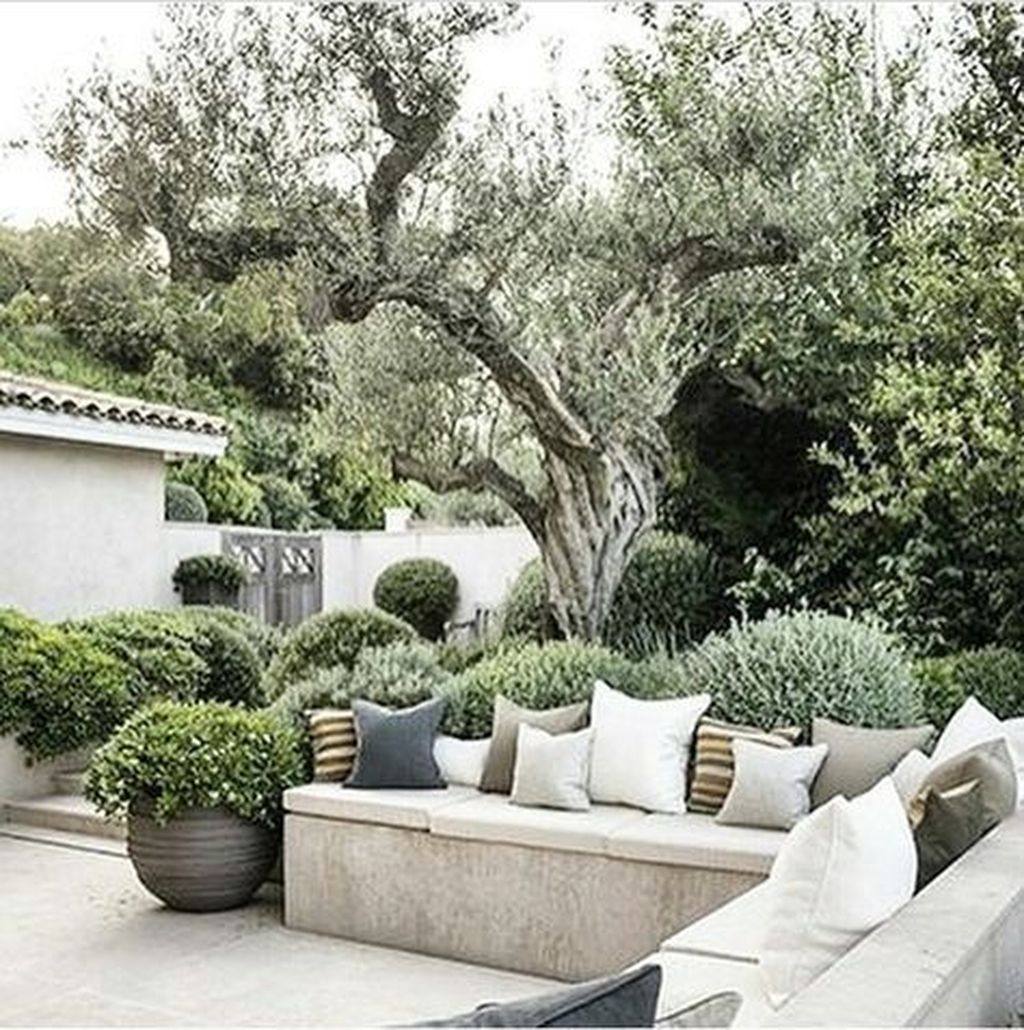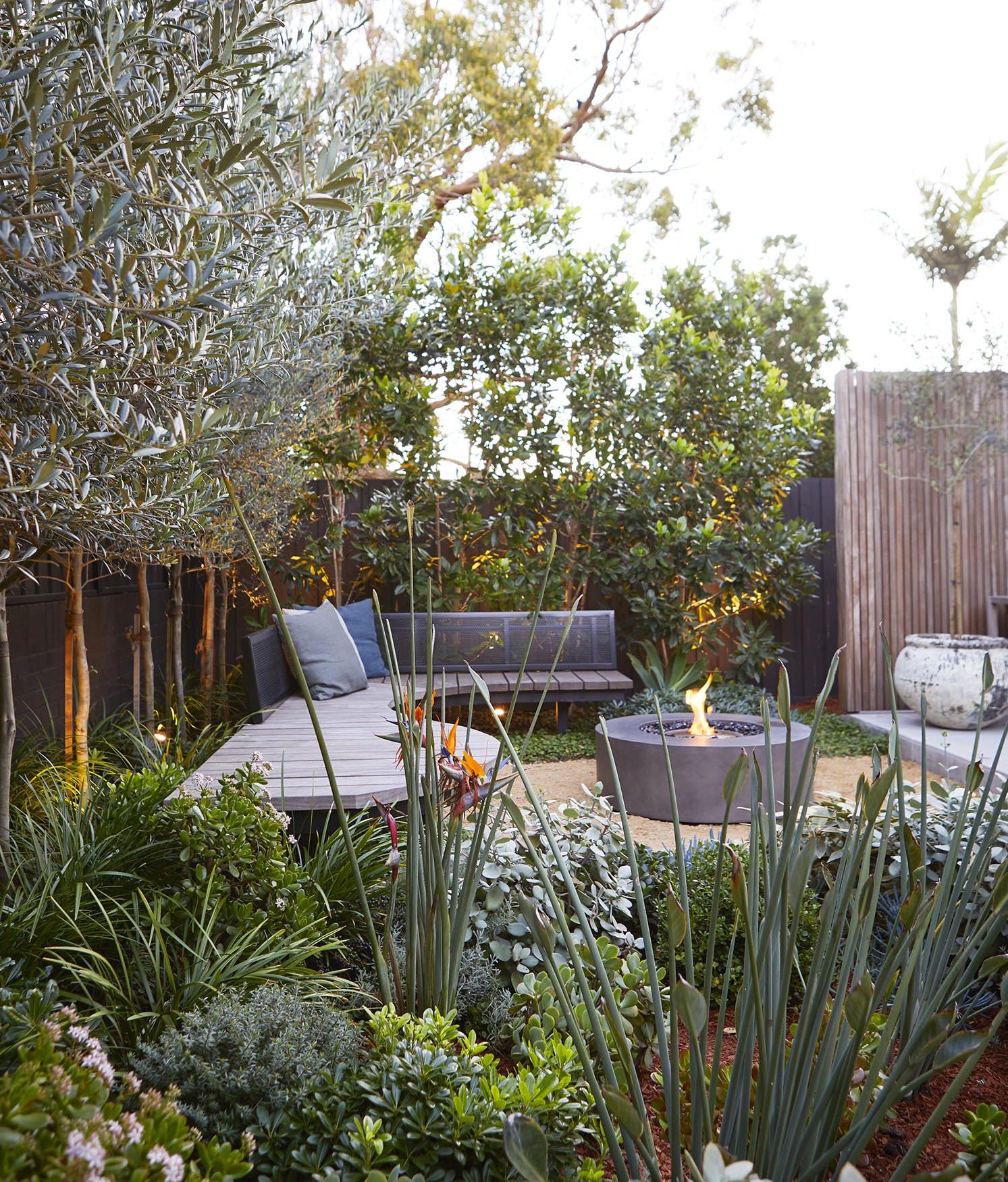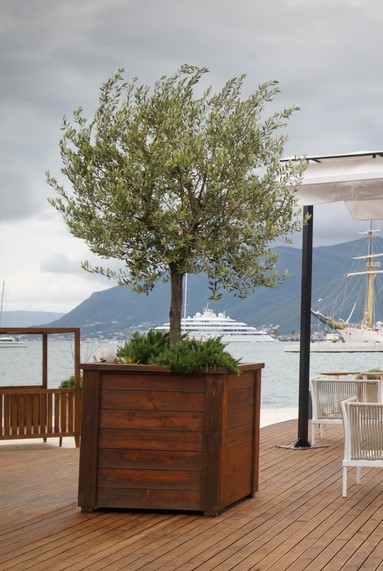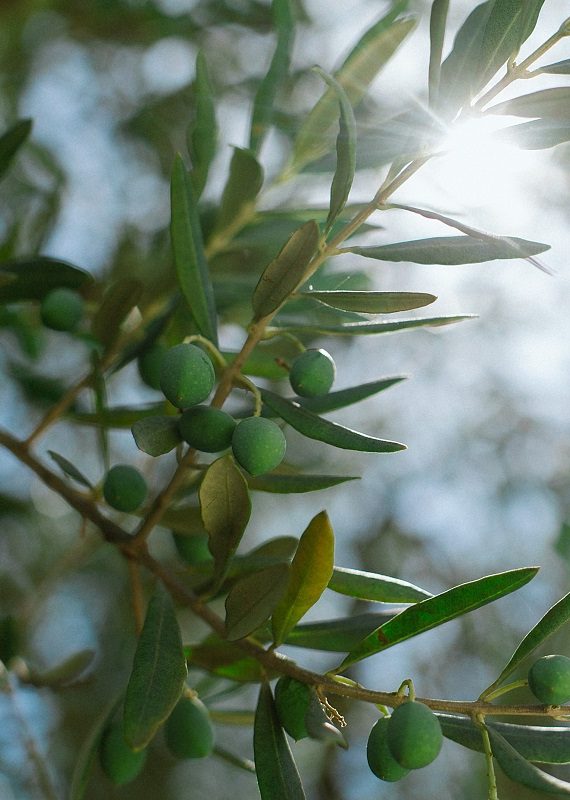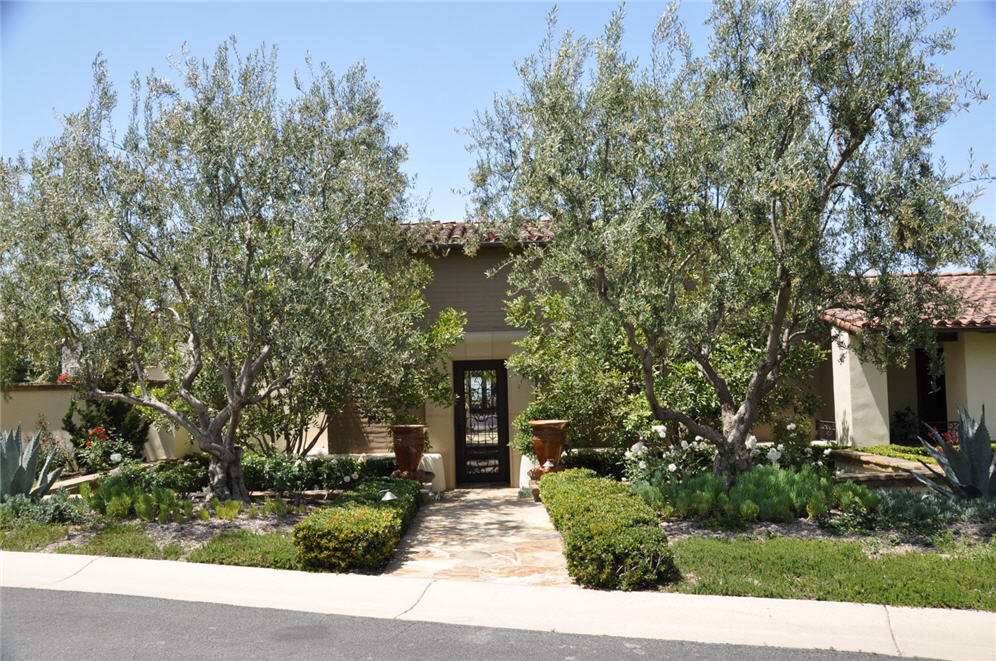Olive Trees have almost a mythical history to them because they’ve been around for so long in the Mediterranean and North Africa. For hundreds of years the foliage and fruit has been used in farming, culinary and health practices.
How is this relevant to gardens nowadays? Well, Olive Trees are easily one of the most versatile and useful plants around. On top of that they are extremely hardy and can thrive in almost any conditions. Frost hardy, sun hardy, windy hardy, frost tolerant, drought hardy, you name it.
Whether it’s a screen you need for privacy, a pot plant for the patio, or something on your apartment balcony, Olive Trees are the way to go. Not to mention the delicious olives they produce.
As we’re writing this, we’re sipping a cup of olive tea, which is quite nice and refreshing. We’ll be telling you all how about how to make it, as well as the many other things you can do with the fruit and foliage of an Olive Tree.
A Deep Dive into Olive Trees
We are doing a very deep dive into Olive Trees so here’s a summary of all the things we will be talking about:
Applications in the Garden
Applications in the Kitchen
Different Garden Style Examples
Suitability and Care
How to Choose the Right Species of Olive Tree
Answering your FAQ
Applications in the Garden
It’s slightly insane just how many different things you can use an Olive Tree for in the garden and we’re so excited to tell you all about it.
Feature Tree
Olive Trees make for an excellent hardy feature tree that will look great all year round. They also suit a huge variety of garden styles, such as Mediterranean, Coastal and Modern Sculptural. You could put one in the middle of a large lawn, or fit it in a small garden.
The best species would be Manzanillo or Verdale, as they are really strong growers that produce a good crop of fruit. If you weren’t wanting fruit, then we would recommend Swan Hill, which is also a strong grower, but doesn’t really produce any olives. It is a classic looking Olive Tree that is quite beautiful.
Hedge or Windbreak
Olive Trees make for fantastic windbreaks around vineyards, farms or even in the suburban backyard. There’s something about the combination of Grapevines and an Olive Hedge that makes us feel like we’re in Italy.
Particularly farms can benefit greatly from an Olive Tree hedge, because of the foliage that can be used as farm fodder in times of drought. More on that later on. But it also gives your farm a different look than the typical Cypress Trees that are always picked as a windbreak.
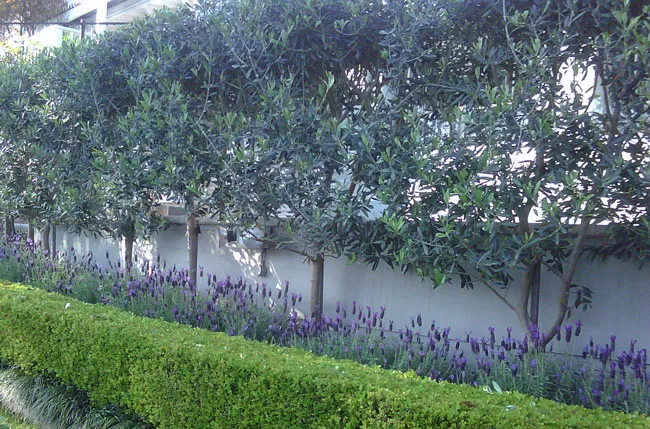
You can trim them up quite nicely to make a tall, narrow hedge if you’re limited on space, or you just like the look of a thinner hedge. You also have the choice of creating a pleached hedge for a neat and formal appearance.
For hedging it’s best to get Olive Trees with finer foliage. If you want a low hedge, Bambalina is a great option. If you want a taller hedge, then go for Picholine or Del Morocco. They both have a nice upright habit, dense fine foliage and trim up into a beautiful hedge.
If you want a hedge with no fruit, then you’d look at Swan Hill or Tolley’s Upright. Tolley’s Upright is particularly dense, and as the name suggest, very upright, with dense criss-cross sort of branches. Which is also great for a pleached hedge. They are both low fruit producing.
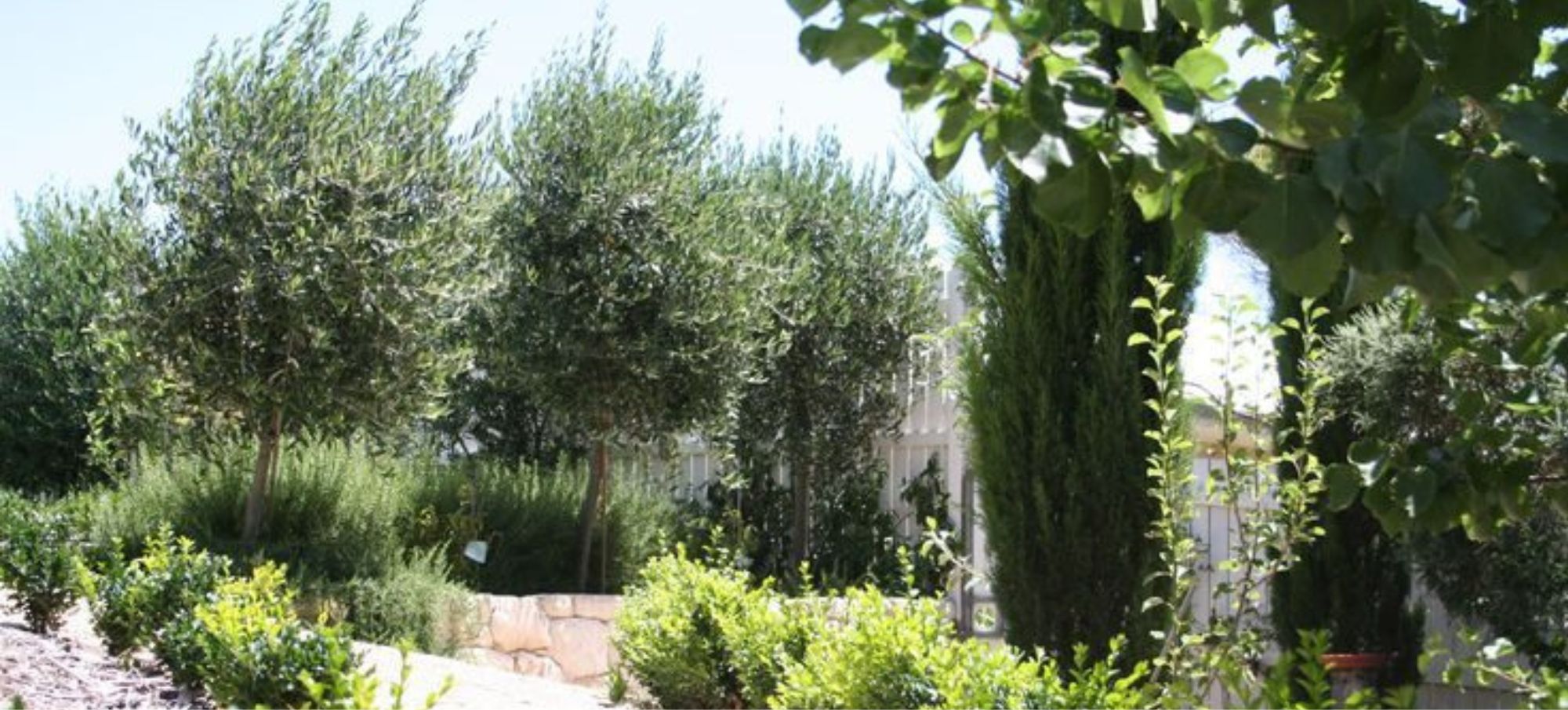
Now for hedging in agriculture situations on big farm properties or vineyards we would suggest planting a mixture of varieties. Californian Queen is a very good cross pollinator which you can mix with species like Manzanillo, Paragon or Picual. All of these species are big vigorous growers that would do great in such situations.
With the cross pollination you have the added factor of a huge production of olives. A tip: regular trimming helps promote fruit production, and you can use the trimmings to feed livestock.
For a pleached hedge the best varieties are Tolley’s Upright, Del Morocco or Manzanillo. The best method of getting a pleached hedge is by buying a 12 inch pot Olive Tree with tall straight stems. Then you trim up the bottom branches, plant it, and trim it progressively to get a beautiful square hedge on a stick.
The beauty of a pleached hedge is how elegant and formal it looks, while giving you the opportunity to plant something underneath. This two-layered garden adds dimension and intrigue. Your options are endless, but some good choices would be Carpet Rose or Prostrate Rosemary.
Avenue
Olive Trees are big enough to form a gorgeous avenue on a large property or farm. Plant a line of them and enjoy both the aesthetics and the delicious fruit. You could plant them up a driveway or walkway.
Nature Strip Plant
Don’t feel restricted to growing your Olive Tree just in the backyard. They work fantastic on the nature strip as well. This is because it doesn’t seem like the birds go for them.
We visited a street of Olive Trees in Campbellfield and there were heaps of olives. If that had been apples or plums, birds probably would’ve eaten them all.
So they’re a hardy tree that you don’t have to worry about too much.
But of course, you could just as easily place an Olive Tree on a patio or by the front door in a pot. What we love about pots is the extra dimension it brings to your garden where you can play with texture, colour, shape and size of the pots for greater visual interest.
Or consider doing something like planting Ornamental Grape Vine near it and letting it climb all over the pot for even more intrigue.
There are several different ways you can grow you Olive Tree in a pot. The first is to keep it natural and just let it grow freely and get bushy. The next is to trim it cleverly, letting it become dense and bushy, but keeping the shape a bit neater. Then there’s the next thing we will be discussing – trimming it into a topiary.
Olea ‘Bambalina’ Olive Tree are perfect for a pot, particularly if you were wanting a tiny olive that could fit in a smallish pot. However please note that Bambalina doesn’t produce much fruit.
Both the Olea ‘Kalamata Jumbo’ Olive Tree and Olea ‘Kalamata’ Olive Tree would be great in a pot, and they are very similar to one another. The Kalamata Jumbo is a small, slow growing tree that produces big dark fruit (bigger than the regular Kalamata Olive Tree).
If you were after a big, lush Olive Tree, then go for Olea ‘Swan Hill’ Olive Tree. It hardly produces any fruit so won’t have to worry about any messiness of the olives.
However, if you are after a fruiting Olive Tree for a pot, consider Garden Harvest or Manzanillo. They both produce plenty of fruit and do well in a pot.
Topiary
You could pretty much shape Olive Trees however you please. This could be as a ball on a stick, or even cloud pruned for a really striking feature.
Now if someone is wanting a cloud pruned one, we typically steer them towards getting an advanced Olive and trimming it themselves, as a cloud pruned one can be really quite expensive.
But oh, the cloud pruned Olive Tree is a spectacular sight, an instant feature that sets your garden apart from others.
A good little tip here is if your Olive Tree is looking a bit scrappy, cut it back into a nice topiary to create a beautiful centrepiece, rather than leave it as an eyesore.
But let’s say you don’t have an old Olive Tree, you’re going to be looking for a type of Olive Tree that is a strong vigorous grower. This is types like Verdale, Manzanillo or Swan Hill.
Personally, we like the look of Verdale and Manzanillo more as they produce a good amount of fruit, and we find the olives looks quite beautiful amongst the cloud pruned foliage.
But of course, Swan Hill would also look great, despite its low production of fruit.
The ‘Bambalina’ Olive Tree is another great option for a topiary, particularly a ball on a stick. It has dense fine foliage that loves being trimmed.
Indoor Plant?
So you may be starting to think – is there anything the Olive Tree can’t do? This may be it. When left inside, eventually Olive Trees will die.
But there is actually a nifty way around this if you’re really set on having an Olive Tree inside. We often get the owners of Italian or Greek restaurants that want a Mediterranean feel to their interior décor and so want to put an Olive Tree inside.
What we’ve found from talking with customers is after a few months they go backwards. So what we’d recommend is buying two Olive Trees, placing one indoors and one outdoors, and then about every week or so, changing them around.
Which we get is a lot of effort, but hey, if you really want an Olive Tree indoors this is just what you’re going to have to do if you want to keep it alive and thriving.
The best type for this would be Garden Harvest because of its nice bushy nature, the fact that it fruits and that it’s a small tree.
Applications in the Kitchen
The usefulness of Olive Trees isn’t restricted to the garden. With edible foliage and tasty olives, there is so much you can do in the kitchen with an Olive Tree.
Olive Tea
Olive tea has been used for hundreds of years as a medicinal herb because of its many health benefits. It is packed with antioxidants and has antimicrobial, antiviral and anti-inflammatory properties.
This helps improve with immunity, bone health, lower blood pressure and even reduce cardiovascular issues. How incredible is that!?
Also olive tea doesn’t have caffeine, making it perfect for a relaxing cup of tea before you go to bed. We actually found we had the best night of sleep after having one later in the evening.
So how do you make olive tea? It is as simple as picking fresh new growth from your Olive Tree then putting it in the oven on 150 degrees to dry it out.
Once it’s gotten to the point of being crunchy you know it’s ready. Make sure you don’t bake it for too long or else it will lose its flavour. Then you crush it up nice and fine, pop it into an infuser and steep it in boiling water.
There you have it – a delicious cup of olive tea. You can drink this tea straight or add some lemon juice and honey for extra flavour and sweetness. The flavour by itself is quite subtle, with an olive aftertaste.
Fodder For Farm Animals
Now the foliage from Olive Trees won’t be your first choice for farm animal fodder, but in times of drought, it may be your only option.
Australia can be quite prone to droughts and when it’s been so hot and dry for a while the grass starts to shrivel up and die. Then there’s no food for your sheep and cattle.
But what’s fantastic about Olive Trees is that they have very deep root systems and don’t dry up during drought. Then you can trim off the foliage and feed it to your livestock and keep them alive and healthy.
You don’t have to wait for a drought to use the foliage as fodder, you could mix it in with their hay or normal feed anytime.
Also a side benefit of Olive Trees is that they make for beautiful evergreen shelter for animals. You can plant is as a large tree line and avenue or sporadically as shelter areas for cattle and sheep.
So if you’re a farmer, you can’t go wrong with Olive Trees.
Fruit
Of course we can’t talk about Olive Trees without mentioning the delicious olives they produce. The best thing is that even the olives you harvest can be used in a number of different ways, such as pickling olives or making olive oil.
If you’re wanting table olives, then the number one choice is Kalamata. But please note that Kalamata is not a great strong tree for cold wet country. They are a slow grower and more difficult plant than other Olive Trees.
In those sorts of areas is better to plant UCLA or Manzanillo. It’s also possible that you could get more olive production from a UCLA or Manzanillo, as they are both fast growers and really good for table olives.
The other best types of Olive Trees to get for fruit would be Olea ‘Garden Harvest’ Olive Tree. It is a prolific producer that grows naturally to around two metres. So it’s easy to keep it small and bushy, nut also have it producing lots of olives.
Another good species is Olea ‘Manzanillo’ Olive Tree, which is a great producer of olives for the table or to even make into oil. It is also nice and lush looking. What’s great about Garden Harvest and Manzanillo is that they both keep well in a pot.
In terms of getting fruit from your Olive Trees, you’re looking at about three to four years before you get a good crop of fruit.
Pickled Olives
You don’t need any fancy equipment or a huge amount of time to pickle olives, it’s actually so easy to do it. There are so many recipes that you can use pickled olives in, like this one here.
You can use pickled olives by themselves on a cheese platter, or spice them up to make a particular tasty snack on their own. You can put them in a Greek chicken bake, salads, on sandwiches or pizzas, in wraps – the list goes on.
Of course you could do all of this with fresh olives, but what is great about pickled olives is that they last much longer so you can always have a jar on hand.
So you could keep some olives fresh, and then have a jar of pickled olives in the cupboard.
Olive Oil
We thought you would need a giant factory with presses to make olive oil, but people have been making it in cottage for hundreds of years. Chris has a little story about his experience with homemade olive oil:
“I was visiting a house to buy roses and I saw that they had a little Olive Tree in the backyard. I made a comment about it, and they said that they produce enough olive oil for the whole family from the one tree. They even gave me a little bottle of olive oil and I took it home. Now that was the best olive oil I have ever had. It tasted incredible, and I loved knowing exactly what is in it.”
So you would only need one or two trees to produce enough oil for a family. Crazy.
The best Olive Tree for oil production is Paragon and Picual. When the goal is to produce oil, it’s best you plant a few Olive Tree for cross pollination. Good Olive Trees to pair with these would be Manzanillo and UCLA.
Check out this recipe on how to make your own olive oil.
Garden Styles
We often use Olive Trees in our Garden Designs. We like to plant an Olive Tree as the centre feature and then surround it with plants such as Correa alba balls, ‘Blue Fescue’ Grass or any other nice grasses.
So then your feature is this hardy evergreen tree that is low maintenance and going to last for a long time.
Mediterranean Style
Let’s say you want to lean in completely to that relaxed Mediterranean style garden with your gorgeous Olive Tree.
We would recommend planting Rose ‘Pink’ PBR Carpet Rose, Lavandula ‘French’ Lavender, Rosmarinus ‘Blue Lagoon’ Rosemary, Blue Convolvulus and all those plants that just give off a fabulous Tuscan Italian feel.
We actually have an entire section on our website that is dedicated to plants that have a Mediterranean style and we give you some pointers on other bits of design you can incorporate. Check it out here.
Formal Style
Standard Olives are an excellent way to incorporate Olive Trees in your formal style garden. You can buy one from the nursery that has already been trimmed and trained as a ball on a stick. Or you can purchase a normal Olive Tree and do it yourself.
It doesn’t take very long to cut the bottom branches and trim the top into a ball, so very approachable for anyone. A standard Olive Tree would look great at the entrance of a courtyard or placed strategically in the garden.
Check out our full range of formal style plants here.
Coastal Style
We love putting Olive Trees in coastal style gardens because they complement it so beautifully and are able to withstand the conditions that come along with a garden near the beach.
Just the other day we saw a cloud pruned Olive Tree that was right on a beach front garden, and it looked absolutely spectacular.
Check out our full range of coastal style plants here.
Commecial Gardens
Olive Trees have great applications for hotels and restaurants where people typically have tough situations and don’t have a lot of time to look after plants.
You could put them in a hot sunny courtyard out the back of a café and they will remain lush. You could place them at the front of a hotel and not worry about watering them. You can place it in a pot on a rooftop balcony and have not a single care about the wind.
Check out our full range of low maintenance plants here.
Suitability & Care
Most of the places where Olive Trees are growing is broken limestone country. So the alkalinity is fairly high, and luckily most of Victoria tends to be more acidic.
So for your Olive Tree plenty of Dolomite Lime is really good, a bit of fertilizer – organic or artificial, and some summer water. If it’s planted in the garden, keep the grass and weeds away from the bottom.
If you’re growing it in a pot, make sure that one or twice a year you give it a really good dose of Dolomite Lime. The reason for this is that over time all the calcium will leach from the soil, and to keep your Olive Tree happy it needs that lime to keep calcium levels high.
Then with a bit of fertiliser and regular watering, you can keep that Olive Tree in a pot for as long as you like. They love a hot, open, and sunny spot.
If you live on a beach front an Olive Tree is perfect. A lot of plants would shrivel and die from the salt spray coming in. But an Olive Tree just takes it and keeps on thriving.
A real trooper of a plant. And truthfully, Olive Trees are one of our favourite plants to use in a coastal style garden.
The Best Olive Tree for You
Now there are many different species of Olive Trees, all with their unique strengths and drawbacks. Deciding what Olive Tree is best for you is all about getting clear on what you want from your Olive Tree.
For example the Kalamata Olive produces the most delicious olives, whereas Tolley’s Upright produces minimal fruit but is great for hedging.
Do you need something that grows tall and narrow for a small garden bed? Do you want one that will produce tonnes of olives? Do you want one that doesn’t produce any fruit at all?
Something you also have to keep in mind when making this decision is the effectiveness of cross pollination. You can get by perfectly fine with just Olive Tree, but your Olive Tree is going to do better if it has a friend. In general it’s a good idea to plant a couple varieties together, and make sure to do you research about what varieties complement each other nicely to get the best amount of fruit.
In Closing
Okay that was a lot of information. So let’s go over the basics again. Olive Trees are incredible. Olive Trees can be used as a hedge, feature tree, pot plant, topiary, windbreak, or screen.
They’re low maintenance and tough as rocks. They give you delicious fruit that can be used in many different ways. They’re more reliable than a Toyota Corolla.
We hope that was enough to get you to jump on the Olive Tree bandwagon.
FAQ
How Long Does it Take For Olive Trees to Fruit?
It depends on how long the Olive Tree has been grown for, if it’s from a grafted juvenile tree, it can take three to five years to produce a good crop of olives.
Now you could get one that is sexually mature and has been propagated in a way that it starts producing olives in a couple of months. But there are some downsides to this.
You’ll find that it’s quite a tiny tree that doesn’t produce many olives. It also grows quite slowly because of the energy it’s spending on growing olives. So it’s more of a cute novelty.
We sell cutting grown from juvenile trees. You’ll find that they’re really strong growers and take three to five years to produce a good crop of olives. You might get one or two crops earlier than that.
But because they are not sexually mature, they’re going to grow big, quickly and freely. Then when they do become sexually mature, they’ll produce a lot more olives.
So having some patience and waiting longer is going to reward you infinitely more.
Olive Trees can be grown from seed, but not many people do that because you can’t guarantee the quality or volume of fruit. The tricker varieties of Olive Trees are grafted and tend to be a little bit more expensive and harder to get. But most Olive Trees, like ours, are grown from cuttings.
The best option if you want to save money is to buy a small Olive Tree grown from a cutting.
How Expensive Are Olive Trees?
Olive Trees are so incredible that they must be expensive! Nope. They’re actually very much a reasonably priced plant, and if you buy them small, they can be quite cheap.
Are Black or Green Olives Better?
Well, actually your tree has both. Generally speaking, your tree will start with green olives then as they ripen up, they’ll turn black. If you get a super heavy crop one year, it’s likely you’ll get a much lighter crop the next year.
But this tends to happen more with the older varieties, as the newer varieties have been bred to be more consistent. Which is why it pays to have a few different Olive Trees working together, cross-pollinating, and increasing the crop.
Do All Olive Trees Produce Fruit?
You need to be mindful of the fact that some Olive Trees don’t fruit such as the Swan Hill or the Tolley’s Upright. The Tolley’s Upright is very tall and upright and has a different style of foliage. The Swan Hill is more spreading and conventional with barely any fruit. So if you’re after the look of the Olive Tree without the olives then these would be perfect options. Or you can just take a fruiting Olive Tree and treat it like an ornamental plant – the black olives look quite lovely against the silver foliage.
Do Olive Trees Have Dangerous Root Systems?
Olive Trees don’t have a particularly dangerous root system, we’ve never heard an architect saying to be cautious of planting an Olive Tree around the house.




